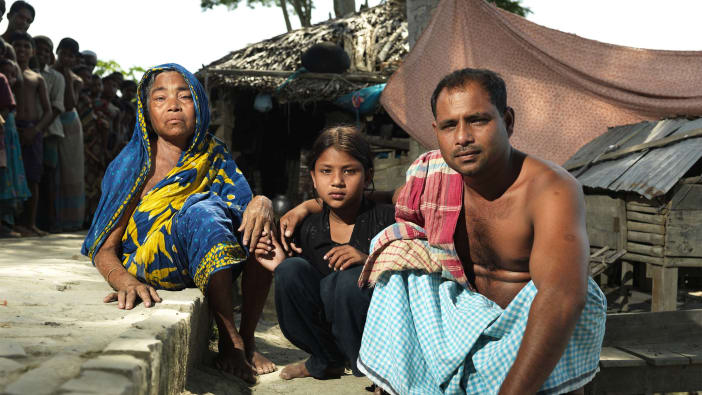The ‘tree gardens’ of the Chagga people of Mount Kilimanjaro provide an inspiring model of how land can be sustainably managed.

Articles
The tree gardens of the Chagga
The ‘tree gardens’ of the Chagga people of Mount Kilimanjaro provide an inspiring model of how land can be sustainably managed.
1999 Available in English, French, Portuguese and Spanish

The Chagga are a mix of ethnic groups who live on the slopes of an impressive mountain, Kilimanjaro, in Tanzania. As various ethnic groups settled in the area they brought their own crops with them – including maize, cassava and sweet potatoes. Their rich mix of many plants slowly developed into a distinctive form of land use. This uses land not just in terms of spacing at ground level, but also takes into account the differing heights of plants. They use trees to create multiple levels of growth.
The forest as a model
They took their inspiration from the natural forest. They saw that the forest made maximum use of its resources of land, water, and light and so they started farming small parts of the forest land where useful species of plants could be found. Gradually they replaced other parts of the natural forest with cultivated plants. The Chagga have become expert at combining many types of plants which not only require different amounts of light but also have roots of varying depths. For example, yams tolerate the shade of neighbouring trees and use their trunks as climbing supports. Trees with deep root systems allow crop plants to be grown right next to the tree and still obtain sufficient nutrients. Today, a typical Chagga farmer grows up to 60 different species of trees – and often many different varieties – on an area the size of a football field. Recycling nutrients is vital and cattle manure is used to fertilise crops.
The different zones
The lowest zone (up to 1m high) includes taro, beans and fodder grasses. The next zone (1–2.5m) consists mainly of coffee with the banana canopy (2.5–5m) above it. Above the banana layer are many valuable timber trees. The average small plot will produce 125kg beans, 280kg coffee, and 275 bunches of bananas each year and supply fodder for livestock. Their system of farming has remained sustainable for over 100 years, mainly because they keep continuous ground cover and return nutrients to the land. The Chagga’s use of natural resources continues to impress visitors. Long before there were development projects in the area, the Chagga tapped water in steep, remote gorges, digging canals and hollowing out tree trunks to carry it to their homes on mountain ridges. They use this for drinking, livestock and irrigating the nurseries.
There are many aspects of Chagga life which set a good example for development projects. From one packet of coffee seeds in 1885 the Chagga now have over one million coffee bushes in their smallholdings. The rapidly changing prices of coffee on the world market taught the Chagga not to concentrate just on coffee as a source of income. This is why bananas and other food crops never disappear from tree gardens even when coffee prices are high.
Of course, Chagga life is not perfect. The one resource they do not use so wisely is people power. The burden of most of the work stills falls mainly on the women. However, women on Kilimanjaro need only just over two hours per week to gather enough fuelwood for their families – much less than in other parts of Tanzania. This is because fuel wood is included in the many different products grown in the smallholding. One hectare is usually sufficient to supply a large family with fuelwood and timber.
Simon Batchelor is a consultant working with a number of organisations to support sustainable initiatives. his address is: 152 Cumberland Road, Reading, RG1 3JY, UK
E-mail: [email protected]
Similarly Tagged Content
Share this resource
If you found this resource useful, please share it with others so they can benefit too.

Subscribe to Footsteps magazine
A free digital and print magazine for community development workers. Covering a diverse range of topics, it is published three times a year.
Sign up now - Subscribe to Footsteps magazine






